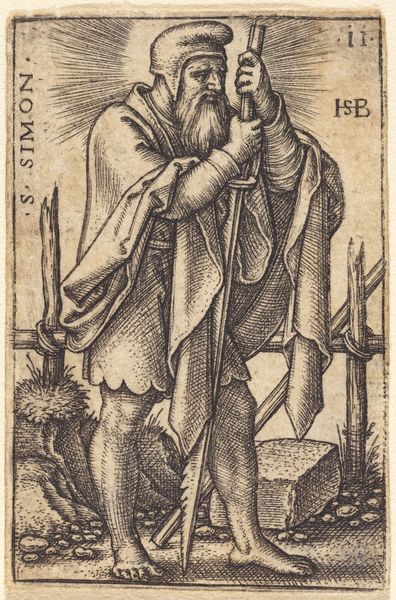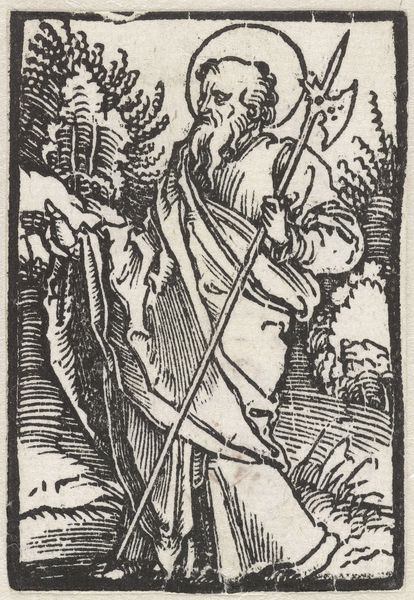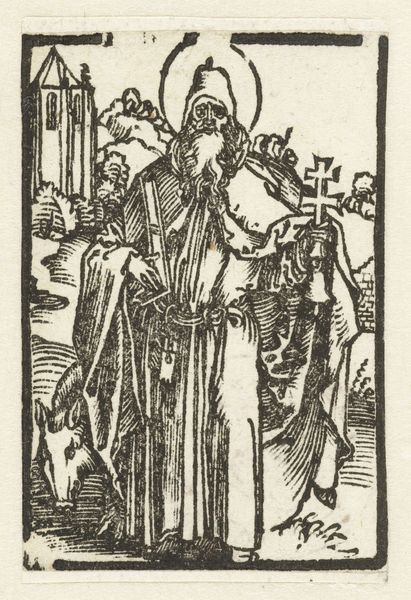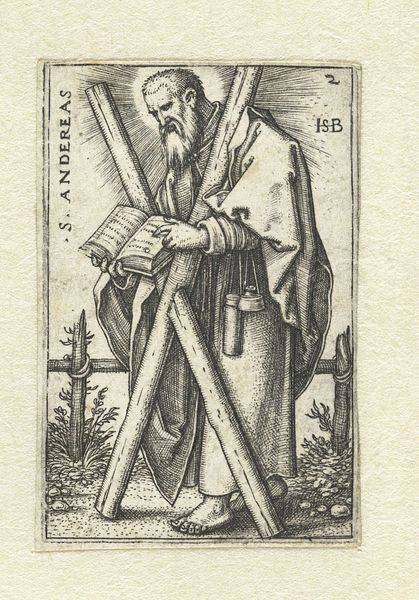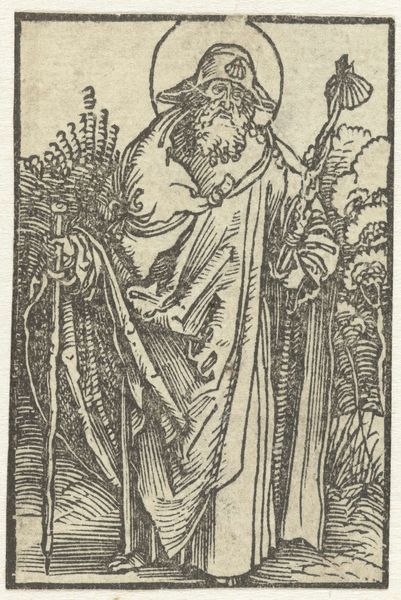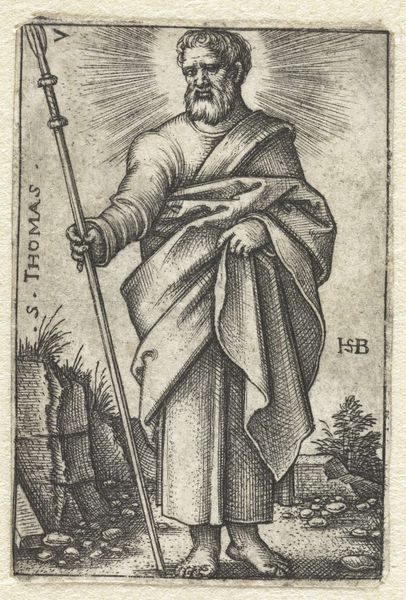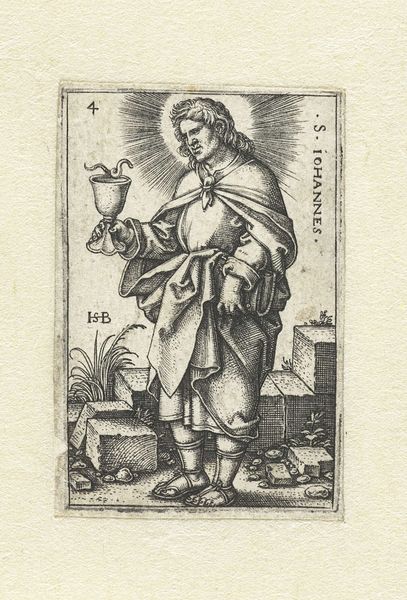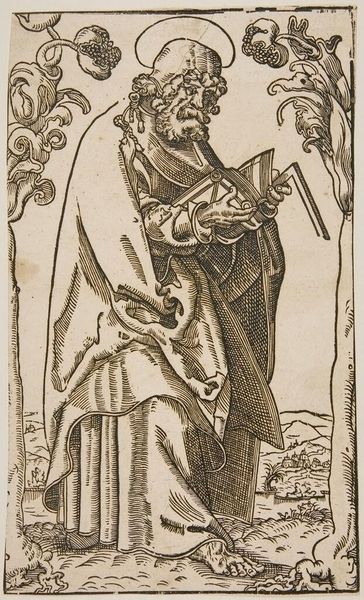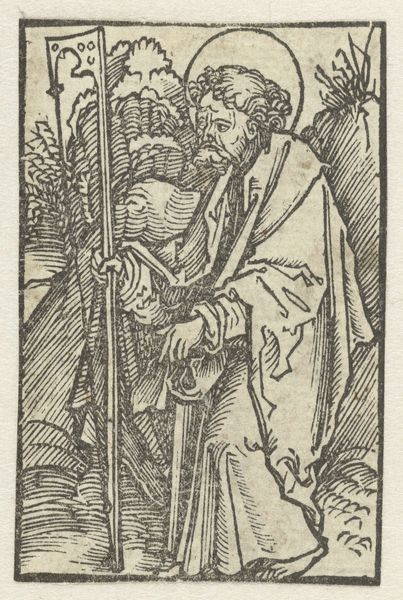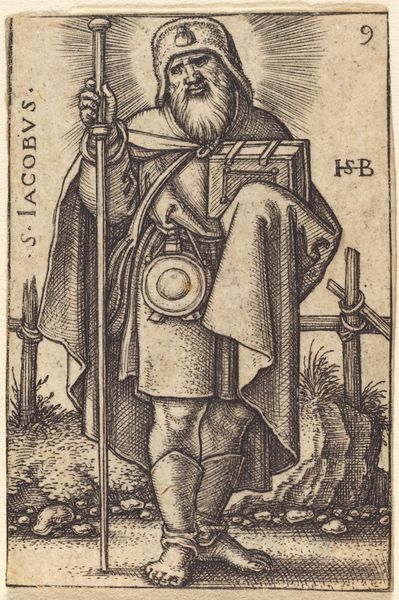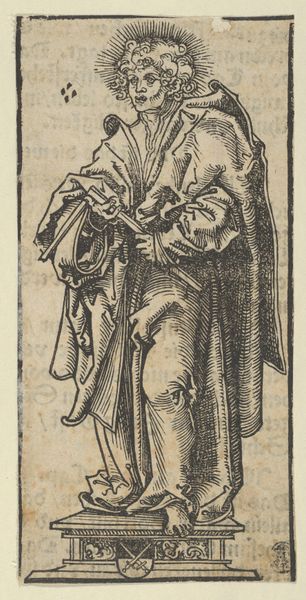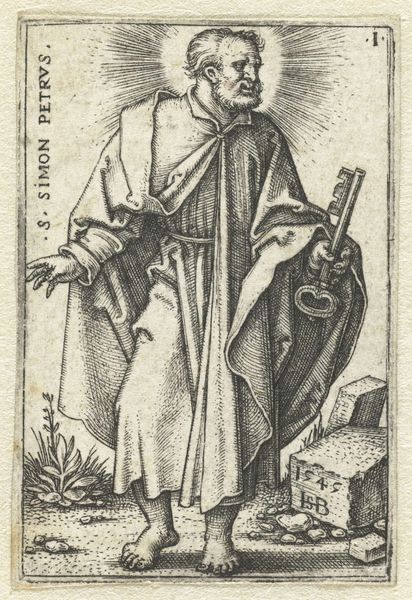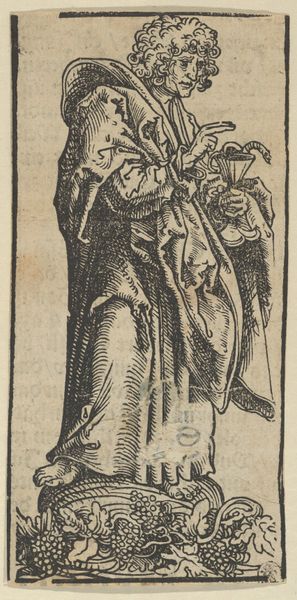
print, engraving
#
portrait
# print
#
old engraving style
#
figuration
#
line
#
history-painting
#
northern-renaissance
#
engraving
#
realism
Dimensions: height 46 mm, width 30 mm
Copyright: Rijks Museum: Open Domain
Curator: This is Sebald Beham's engraving, "Simon Zelotes," dating from around 1545 or 1546. It's part of the collection at the Rijksmuseum. Editor: There’s an immediate sense of solidity, a quiet stoicism, about this figure. He seems braced, prepared. The lines are so sharp, so defined, it lends him an almost monumental presence, despite the small scale. Curator: The sharp lines are typical of engraving, and Beham was a master of the technique. As a Little Master of the German Renaissance, he focused on smaller prints like this, which circulated widely and influenced popular religious understanding. Note the figure of Saint Simon standing next to a rudimentary fence, staff in hand and what appears to be a saw at his feet. Editor: That saw... it certainly brings to mind the traditional symbol of Simon's martyrdom, sawn in half. The detail is unsettling. But look at the way the lines radiating from behind his head create a halo effect, albeit quite an aggressive one! Is it meant to signify sanctity, authority, or something else? Curator: Beham is very intentional. It's interesting you say aggressive, because his work during this period often challenges orthodox religious imagery. His choice of implements associated with death alongside this radiant halo certainly poses a bit of a paradox. Also, keep in mind that religious prints were powerful tools during the Reformation, subtly influencing political and theological positions. Editor: That raises interesting questions about Beham's audience and how they would have read these symbols. The staff and saw suggest a working man, yet that halo implies a saintly status, almost elevating the everyday. Do you think this hints at a growing Protestant ethos that honored labor? Curator: It could indeed signal that, but remember that iconographic traditions around sainthood are far more nuanced than simple class symbolism. The symbols operate on different levels – personal piety, popular narrative, and artistic innovation. Editor: Food for thought. Thinking about the power and ambiguity imbued into one image. It's incredible to see how artists could imbue such complex ideas within a simple medium, transforming cultural discourse in a volatile social context. Curator: Agreed, and it reminds us how vital it is to interpret works like Beham’s within their complex historical and religious context, so the ideas it sparked may continue to shape new understanding.
Comments
No comments
Be the first to comment and join the conversation on the ultimate creative platform.
